A bored researcher, boxes of left-behind Husky homework and the painstakingly documented entomology specimens of a 1960s faculty member formed the chrysalis for the Michigan Technological University Insect Collection — a University first with transformative potential for those studying ecological and environmental sciences in the region.
At 10,000 specimens and counting, Michigan Tech's digitized insect collection is relatively small. But its value is huge because of the unique historical perspective of the region you won't find anywhere else, said Tara Bal, an assistant professor of forest health in the College of Forest Resources and Environmental Science.
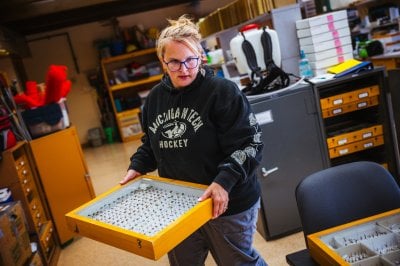
Though the collection includes North American and international specimens, it primarily focuses on Michigan's Houghton and Baraga counties. That's valuable, said Bal, because highly populated areas of the state are well represented in many larger university or museum collections. With the oldest specimen dating back to 1936 and new specimens being added annually, Tech's collection offers the ability to measure and record change in the region's biodiversity.
Bal became aware of accumulating student insect collections when she was a graduate student working at Michigan Tech's Ford Center and Forest for the University's integrated field practicum, a CFRES tradition of full-semester fieldwork known as fall and summer camp.
"All the students in Andrew Storer's forest health class were required to do an insect collection. At the end of the semester, I was surprised at how many never picked up their boxed collections," Bal said. With Storer's permission, she retrieved the collections left behind. "I sorted out the good ones. Over the years, I've given tons of boxes to elementary school teachers and alumni who are doing environmental education," she said.
Bal became the College's sole instructor of insect ecology in 2013 and forest health in 2018 at both summer and fall camps. She gives students the option to do either an insect or fungi herbarium collection. "It's usually about 50/50," she said. "Collections are an effective way to dive into these groups of organisms and get familiar with how to use the terminology and field keys."
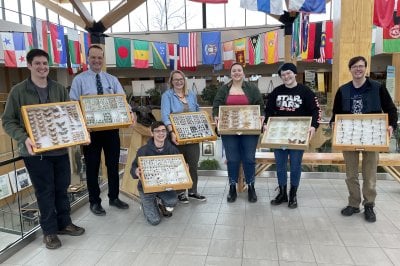
Then came COVID-19. "After a while teaching mostly from home, I got bored," Bal recalled. She retrieved a box of ladybugs, thinking she could photograph them for an insect conservation lesson. "I started sorting and counting. That snowballed into 'This needs to be a catalog of everything we have!' I knew that I had insects students collected from about 2005 onward, while the collections in the cabinets were older — 1960s, 1970s, 1980s and more."
Over 2020 and 2021, Bal moved the oldest collection trays and cabinets from the Ford Center into her lab and began hiring CFRES Earn and Learn students to sort, count and enter the tag information: date collected, state, county, collected-by name and any other information included on the tag.
More than 10 Earn and Learn students helped on the project, including Tom Panella. Panella, who earned his Master of Forestry (MF) from Michigan Tech in 2022, is currently a Ph.D. candidate studying forest health. A description of the collection will be featured in his dissertation.
Panella wasn't looking for a research project. The MF is a professional coursework-based degree with no thesis or report component. "I had no intention of pursuing research. However, the more time I spent learning about research projects and helping out Ph.D. students with fieldwork, the more I fell in love with it," said Panella. "I've also been interested in plant and animal taxonomy — the science of classifying organisms — from a young age, and was considering careers related to it. When I shared this with Tara she quickly introduced me to the insect collection and I was instantly hooked."
"It felt like this uncovered treasure chest of amazing creatures spanning back to the 1930s. I started identifying specimens down to species and discovered we had many occurrence records that have never been documented in the western U.P."
"Tom was instrumental in getting the catalog uploaded and has since migrated the collection over to ecdysis," said Bal, referring to the digital platform, whose system is funded by the National Science Foundation. "If I'm the curator of the Michigan Tech Insect Collection, then Tom is the current collections manager."
Panella said one of the most interesting aspects of the collection is its "two very unique halves."
"We have historical collections from amateur and professional entomologists, with the 1960s and 1970s being especially well represented," he said. "The other, largest portion of our collection is derived from student collections from the early 2000s to present. These two halves give us a very unique glimpse into two different periods of time featuring very distinct collectors with different goals."
Panella said the varied perspectives and time periods enable the collection to uniquely capture insect communities through time and location in ways that data collected with more systematic sampling methods can't. "The student collections tend to feature larger and more charismatic species, while the collections from the '60s tend to be more narrowly focused on species these collectors were interested in," said Panella. "This gives us data for many rare species that would otherwise go undetected. Researchers can use this data to better understand how insect communities have changed over time. These changes can have big impacts on how our ecosystems function."
The Michigan Tech Butterfly Effect
In addition to capturing the interest of an unanticipated research partner to help assemble the collection, fate was on Bal's side. Given her expertise and interest in entomology, it isn't surprising that insects came up in a conversation she had at the dedication of the Nara Family Maple Center. She was telling a University staff member about the insect collection project.
"The staff member mentioned that she'd just bought a house and there were all these old insect traps in the yard and woods when her family moved in. I mentioned they were likely from previous faculty and students like Ken Kraft — I used that name a lot because of how many nicely labeled specimens he had — and she said, 'What? That's whose house we bought!' She put me in touch with Ken's daughter, who was so glad to hear we were revitalizing his insect collections," said Bal. "Ken was a forestry faculty member in 1963-1964. He moved to biology, industry, then back to forestry before retiring. We have yearbook pictures of Ken and other faculty and students pinning insects."
Bal's search of drawers and boxes yielded thousands of Kraft-tagged specimens with most every order represented — except for Lepidoptera (butterflies and moths) and Hymenoptera (wasps, bees and ants).
That really bugged her.
"For someone collecting widely across many insect orders, who had included many other flying insects, it seemed odd that these important groups were missing," she said, adding that a limited number were located in the Michigan State University Collection.
Her detective work led her to Thomas Werner in Michigan Tech's Department of Biological Sciences. Werner, a North American fruit fly authority, also studies butterflies. He had the missing pieces of the puzzle.
"He was getting ready to clean out an old cabinet and, it turns out, had a huge amount of Ken Kraft's moth specimens he was happy to hand over," said Bal. "We want to continue sharing resources — and we have years and years of identification work to do."
Dragonflies, Bumblebees and Donors Welcome
The Michigan Tech Insect Collection will continue to grow as CFRES students at summer and fall camps continue their field practicum projects and as specimens from local research projects are donated. Other types of contributions are also needed.
The project welcomes funding for additional students to help with research and cataloging. Storage trays and cabinets would be helpful, too. "We've already run out of room and are into temporary cardboard boxes, which are not good for long-term storage because pests can get in and destroy specimens," Bal said.
Funding would enable students to go deeper into taxonomy than their Earn and Learn hours permit. "We want to increase our focus on dragonflies and bumblebees next, both super important groups that may have new species records for our region or endangered species records just waiting to be confirmed," said Bal. Those who want to help can access the Michigan Tech Giving website and include their wish to donate to the insect collection in the comments section of the form.
Next steps in the more thoroughly identified groups, including beetles, butterflies and moths, include researching first, new and historic records and publishing more information about the findings.
"Opportunities with a new historic collection like this are endless."
Panella has been poring over College yearbooks to research both the alumni names on the collections and the history of entomology studies at Michigan Tech. The first course was offered in 1939-40, just three years after a forestry major was established at the University.
Panella, who completed an insect collection of his own when he took Bal's forest health course during his MF work, said the project was one of the most memorable of his field practicum semester. "Now, as someone who is actively managing this collection, I get to see hundreds of student collections," he said.
"By cataloging these student collections, I feel as though I'm not only preserving those fond memories students created, but also putting their hard work into something that can have real impacts on our understanding and management of our natural areas."
"Similarly, the older collections we've absorbed were clearly a labor of love for the people that created them," said Panella, who understands what it's like to be intensely involved in a hobby like collecting. "The fact that we're able to preserve these collections that someone cared about so dearly and put them to good use is really important to me. My dad was an avid bug collector in his youth. Over time he wanted to save space and got rid of his collection. He's talked about how much he would have loved to have seen those specimens get used for something like this."
"I love that we're able to cement people's passions and enable future researchers to geek out over them and make unique discoveries."
Michigan Technological University is an R1 public research university founded in 1885 in Houghton, and is home to nearly 7,500 students from more than 60 countries around the world. Consistently ranked among the best universities in the country for return on investment, Michigan's flagship technological university offers more than 185 undergraduate and graduate degree programs in science and technology, engineering, computing, forestry, business, health professions, humanities, mathematics, social sciences, and the arts. The rural campus is situated just miles from Lake Superior in Michigan's Upper Peninsula, offering year-round opportunities for outdoor adventure.
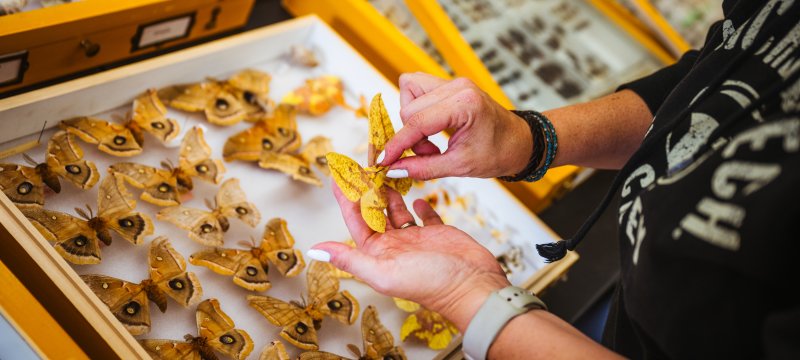


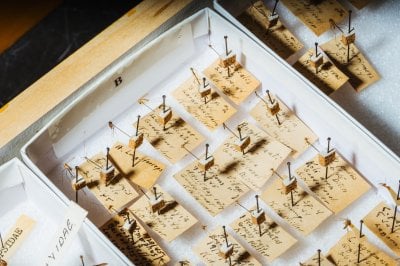
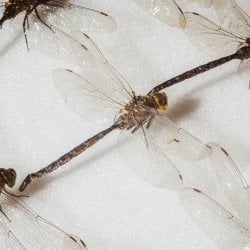
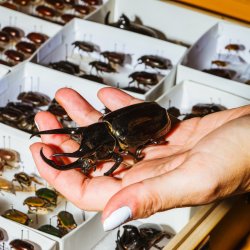

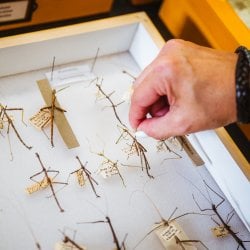
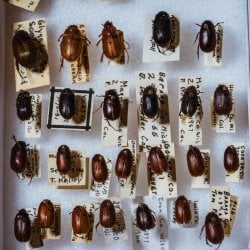
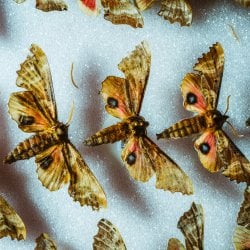

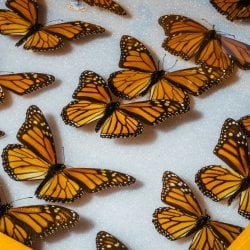
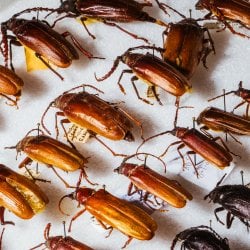
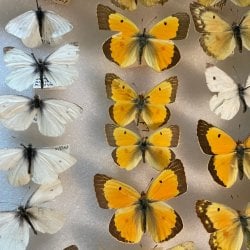
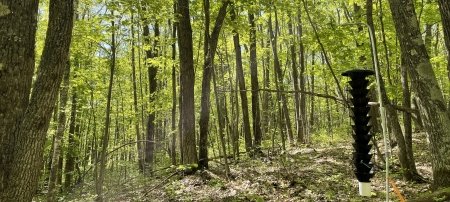


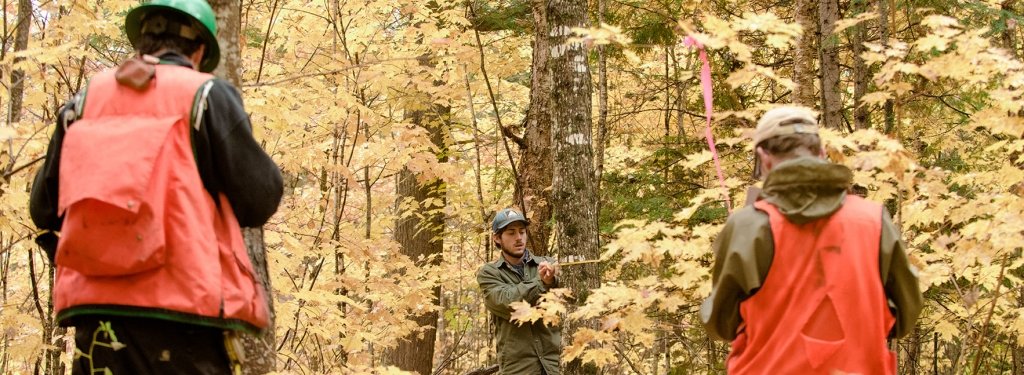
Comments